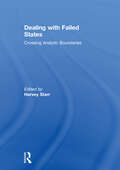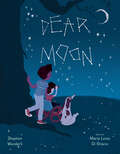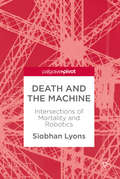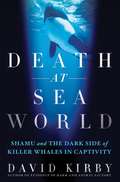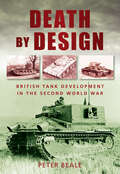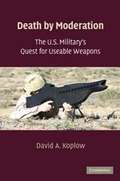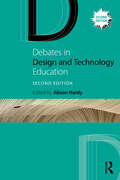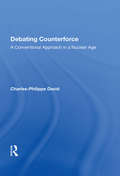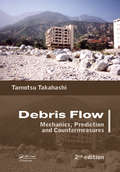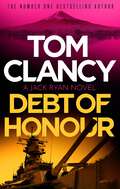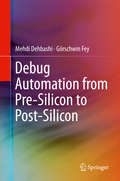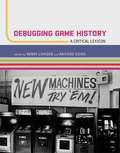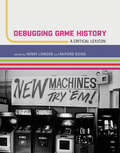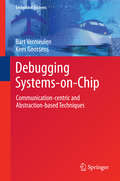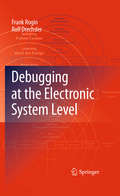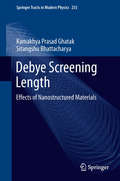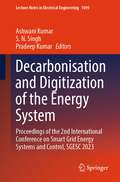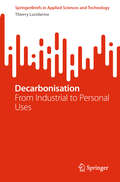- Table View
- List View
Dealing with Failed States: Crossing Analytic Boundaries
by Harvey StarrWith the ever-increasing interdependence across individuals, groups, international organizations, and nation-states an increasingly significant policy concern in the contemporary turbulent world of globalization is the question of state failure. There has been a growing academic interest in the determinants of state failure and an acute awareness across the international community of the need for dealing with issues of instability in states. The contributors to this volume represent the most recent cutting edge approaches to state failure—looking at both conditions of conflict and economic development, dealing with the conceptualization, causes, and consequences of state failure, as well as policy-oriented analyses as to how state failure can be contained, reversed, or prevented. In order to deal fully with the phenomenon of state failure, investigators must be involved in a number of boundary-crossing activities. The contributors to this volume have addressed failed states through: multiple levels of analysis, assessing domestic and cross-border phenomena, internal and external conflict, domestic and international political economy; multiple disciplines and interdisciplinary approaches representing political science, sociology, and economics; various methodological approaches, including large-N empirical analyses, case studies, and simulations; and through both basic and applied research, drawing on the work of academics, IGOs, NGOs, and national governments. This book was originally published as a special issue of Conflict Management and Peace Science.
Dear County Agent Guy: Calf Pulling, Husband Training, and Other Curious Dispatches from a Midwestern Dairy Farmer
by Jerry Nelson“Jerry Nelson’s column comes from the true heart of the Midwest. He has the true voice, the slow twang. He knows wheat from barley. He knows hardware, he knows vegetation, he knows people.”—Garrison Keillor In the tradition of Mark Twain and Jean Shepherd, Dave Barry and Garrison Keillor, Jerry Nelson is a humorist whose beat is the American heartland, a small-town world of pickup trucks and Sunday night pancake dinners, dropping in on neighbors and complaining about the county agent. His depictions of daily life, from the point of view of an ex-dairy farmer and taciturn husband with a twinkle in his eye, are read by 250,000 people a week—and occasionally woven into Prairie Home Companion scripts. These are stories of courtship; childbirth—he offers the delivery room doctor the use of his calf puller; family; neighbors; chores; and the duties of a father—why is it that a man who spends his days in cow manure can’t change a baby’s diaper? Knee-slappingly funny one moment, poignant the next, it’s a very special look at a distinctly American way of life.
Dear Moon
by Stephen WunderliIn this poignant story of grief and healing, Max learns that time will keep ticking and loss is inevitable, but memories last forever.
Death Comes to Cornwall: A gripping and escapist cosy mystery
by Kate JohnsonShortlisted for the Jackie Collins Romantic Thriller Award category of the Romantic Novel Awards 2021The perfect holiday destination. The perfect place for murder... Molly Higgins never expected to be caught up in a murder investigation. All she'd hoped for this year was to work hard, save enough money to open her very own café on the Cornish coast and avoid her ex, Conor Blackstone, who has just arrived back in the village. But when she and Conor discover a body on the cliffside in Port Trevan they are thrown once more together. Molly is keen to leave the mystery to the police, but when she finds herself their top suspect, Molly has no choice but to catch the killer herself - before it is too late.Readers and reviewers on NetGalley love Death Comes to Cornwall'Doc Martin meets Agatha Raisin in Death Comes to Cornwall' Bookish Jottings'If you're a mystery lover then don't miss this one' NetGalley reviewer'Cosy crime with a hint of snark, reminded me a bit of M C Beaton''A deeee-lightful book''I really enjoyed this one. Atmospheric and exciting.'
Death Glitch: How Techno-Solutionism Fails Us in This Life and Beyond
by Tamara KneeseAn accessible yet erudite deep dive into how platforms are remaking experiences of death Since the internet&’s earliest days, people have died and mourned online. In quiet corners of past iterations of the web, the dead linger. But attempts at preserving the data of the dead are often ill-fated, for websites and devices decay and die, just as people do. Death disrupts technologists&’ plans for platforms. It reveals how digital production is always collaborative, undermining the entrepreneurial platform economy and highlighting the flaws of techno-solutionism. Big Tech has authority not only over people&’s lives but over their experiences of death as well. Ordinary users and workers, though, advocate for changes to tech companies&’ policies around death. Drawing on internet histories along with interviews with founders of digital afterlife startups, caretakers of illness blogs, and transhumanist tinkerers, the technology scholar Tamara Kneese takes readers on a vibrant tour of the ways that platforms and people work together to care for digital remains. What happens when commercial platforms encounter the messiness of mortality?
Death Is All around Us: Corpses, Chaos, and Public Health in Porfirian Mexico City (The Mexican Experience)
by Jonathan M. WeberLate nineteenth-century Mexico was a country rife with health problems. In 1876, one out of every nineteen people died prematurely in Mexico City, a staggeringly high rate when compared to other major Western world capitals at the time, which saw more modest premature death rates of one out of fifty-two (London), one out of forty-four (Paris), and one out of thirty-five (Madrid). It is not an exaggeration to maintain that each day dozens of bodies could be found scattered throughout the streets of Mexico City, making the capital city one of the most unsanitary places in the Western Hemisphere. In light of such startling scenes, in Death Is All around Us Jonathan M. Weber examines how Mexican state officials, including President Porfirio Díaz, tried to resolve the public health dilemmas facing the city. By reducing the high mortality rate, state officials believed that Mexico City would be seen as a more modern and viable capital in North America. To this end the government used new forms of technology and scientific knowledge to deal with the thousands of unidentified and unburied corpses found in hospital morgues and cemeteries and on the streets. Tackling the central question of how the government used the latest technological and scientific advancements to persuade citizens and foreigners alike that the capital city—and thus Mexico as a whole—was capable of resolving the hygienic issues plaguing the city, Weber explores how the state’s attempts to exert control over procedures of death and burial became a powerful weapon for controlling the behavior of its citizens.
Death Rode the Rails: American Railroad Accidents and Safety, 1828–1965
by Mark AldrichFor most of the 19th and much of the 20th centuries, railroads dominated American transportation. They transformed life and captured the imagination. Yet by 1907 railroads had also become the largest cause of violent death in the country, that year claiming the lives of nearly twelve thousand passengers, workers, and others. In Death Rode the Rails Mark Aldrich explores the evolution of railroad safety in the United States by examining a variety of incidents: spectacular train wrecks, smaller accidents in shops and yards that devastated the lives of workers and their families, and the deaths of thousands of women and children killed while walking on or crossing the street-grade tracks. The evolution of railroad safety, Aldrich argues, involved the interplay of market forces, science and technology, and legal and public pressures. He considers the railroad as a system in its entirety: operational realities, technical constraints, economic history, internal politics, and labor management. Aldrich shows that economics initially encouraged American carriers to build and operate cheap and dangerous lines. Only over time did the trade-off between safety and output—shaped by labor markets and public policy—motivate carriers to develop technological improvements that enhanced both productivity and safety.A fascinating account of one of America's most important industries and its dangers, Death Rode the Rails will appeal to scholars of economics and the history of transportation, technology, labor, regulation, safety, and business, as well as to railroad enthusiasts.
Death and the Machine: Intersections Of Mortality And Robotics
by Siobhan LyonsThis book challenges conventional notions of biological life and death in the area of robotics, discussing issues such as machine consciousness, autonomous AI, and representations of robots in popular culture. Using philosophical approaches alongside scientific theory, this book offers a compelling critique on the changing nature of both humanity and biological death in an increasingly technological world.
Death at Seaworld: Shamu and the Dark Side of Killer Whales in Captivity
by David KirbyFrom the New York Times bestselling author of Evidence of Harm and Animal Factory- a groundbreaking scientific thriller that exposes the dark side of SeaWorld, America's most beloved marine mammal park. Death at SeaWorld centers on the battle with the multimillion-dollar marine park industry over the controversial and even lethal ramifications of keeping killer whales in captivity. Following the story of marine biologist and animal advocate at the Humane Society of the US, Naomi Rose, Kirby tells the gripping story of the two-decade fight against PR-savvy SeaWorld, which came to a head with the tragic death of trainer Dawn Brancheau in 2010. Kirby puts that horrific animal-on-human attack in context. Brancheau's death was the most publicized among several brutal attacks that have occurred at Sea World and other marine mammal theme parks. Death at SeaWorld introduces real people taking part in this debate, from former trainers turned animal rights activists to the men and women that champion SeaWorld and the captivity of whales. In section two the orcas act out. And as the story progresses and orca attacks on trainers become increasingly violent, the warnings of Naomi Rose and other scientists fall on deaf ears, only to be realized with the death of Dawn Brancheau. Finally he covers the media backlash, the eyewitnesses who come forward to challenge SeaWorld's glossy image, and the groundbreaking OSHA case that challenges the very idea of keeping killer whales in captivity and may spell the end of having trainers in the water with the ocean's top predators.
Death by Design: British Tank Development in the Second World War
by Peter BealeAt the outbreak of war in 1939 British tank crews were ill-equipped, under trained and badly led. As a consequence the lives of hundreds of crewmen were wasted unnecessarily. This was due not only to the poor design and construction of British tanks, but also to the lack of thought and planning on the part of successive pre-war governments and the War Office. Death by Design explores how and why Britain went from leading the world in tank design at the end of the First World War to lagging far behind the design quality of Russian and German tanks in the Second World War. This book is a much-needed warning to governments and military planners: a nation must always be prepared to defend itself and ensure that its soldiers are equipped with the tools to do so.
Death by Moderation: The U. S. Military's Quest for Useable Weapons
by David A. KoplowThis book addresses an important but little-noticed phenomenon in the revolutionary world of military technology. Across a wide range of otherwise-unrelated weapons programs, the Pentagon is now pursuing arms that are deliberately crafted to be less powerful, less deadly, and less destructive than the systems they are designed to supplement or replace. This direction is historically anomalous; military forces generally pursue ever-bigger bangs, but the modern conditions of counter-insurgency warfare and military operations "other than war" (such as peacekeeping and humanitarian assistance) demand a military capable of modulated force. By providing a capacity to intervene deftly yet effectively, the new generations of "useable" weaponry should enable the U.S. military to accomplish its demanding missions in a manner consistent with legal obligations, public relations realities, and political constraints. Five case studies are provided, regarding precision-guided "smart bombs," low-yield nuclear weapons, self-neutralizing anti-personnel land mines, directed-energy anti-satellite weapons, and non-lethal weapons.
Death in the Mines: Disasters and Rescues in the Anthracite Coal Fields of Pennsylvania
by John Stuart RichardsVivid accounts of the dangers that miners faced on a daily basis in the northern, southern, and middle coal fields of eastern Pennsylvania. Since 1870, mining disasters have claimed the lives of over 30,000 men and boys who toiled underground in the anthracite mines of Pennsylvania. Sometimes they survived; many times they did not. The constant threat of fire, explosion, collapsed rock and deadly gas brought miners face to face with death on a daily basis. Through original journal and newspaper accounts, J. Stuart Richards’s Death in the Mines revisits Pennsylvania’s most notorious mining accidents and rescue attempts from 1869 to 1943. From the fire at Avondale Colliery that resulted in the first law for regulation and inspection of mines, to the gas explosion at Lytle Mine in Primrose that killed fourteen men, Richards reveals multiple facets of Pennsylvania’s most perilous profession. Richards, whose family has worked in the mines since 1870, offers a startling yet sensitive tribute to an industry and occupation that is often overlooked and underappreciated.
Debates in Design and Technology Education (Debates in Subject Teaching)
by Alison HardyDesign and technology is a relatively new subject compared to more traditional subjects, and during its brief existence, it has garnered widespread debate in schools. This book aims to explore some of these debates and challenges the reader with new perspectives about the subject by presenting and questioning arguments about the purpose, content and place of design and technology in the school curriculum. It will encourage the reader to critically reflect on their own beliefs and practices to reach informed judgements and perspectives that will affect how they teach and think about design and technology. Exploring the major issues that design and technology teachers encounter in their professional lives as well as introducing new topics they may never have considered before, this comprehensive second edition has been fully updated with 16 chapters focusing on emerging and enduring debates: How do we do race in design and technology? What’s so special about design and technology anyway? What is design cognition in design and technology classrooms? What is the potential of feedback in the creative processes of a design and technology classroom? Does food fit in design and technology? What is the role of making in design and technology? With its combination of expert opinion and fresh insight, Debates in Design and Technology Education is the ideal companion for any student or practising teacher engaged in initial training, continuing professional development or master’s-level study.
Debates in Design and Technology Education (Debates in Subject Teaching)
by Gwyneth Owen-JacksonDesign and Technology has long held a controversial place on the school curriculum, with some arguing that it shouldn’t be there at all. This book presents and questions considered arguments and judgements, and explores the major issues that all D&T teachers encounter in their daily professional lives. In exploring some of the key debates, it encourages critical reflection and aims to stimulate both novice and experienced teachers to think more deeply about their practice, and link research and evidence to what they have observed in schools. Written by expert design and technology education professionals, chapters tackle established and contemporary issues, enabling you to reach informed judgements and argue your point of view with deeper theoretical knowledge and understanding. Debates covered include: What is the purpose of design and technology? Is it a vocational or academic subject? What is the place of design and technology within the STEM agenda? What knowledge and skills do teachers really need? What does the design and technology gender divide mean for schools and pupils? Is it a ‘creative’ subject? What is the future for design and technology? With its combination of expert opinion and fresh insight, Debates in Design and Technology Education is the ideal companion for any student or practising teacher engaged in initial training, continuing professional development or Masters level study.
Debating Counterforce: A Conventional Approach In A Nuclear Age
by Charles-Philippe DavidSince the U.S. presidential elections of 1980, debate has intensified between those who believe that nuclear weapons can only deter a war not intended to be fought and those who see nuclear weapons as an advancement in weaponry that allows for the waging and winning of a nuclear war. At the focal point of this debate is the rise of the “counterforc
Debris Flow: Mechanics, Prediction and Countermeasures, 2nd edition
by Dilip K. Das Tamotsu TakahashiThis is the 2nd edition of one of the most comprehensive accounts of debris flow, describing both theoretical and applied aspects. In the first part, the fundamental mechanical characteristics are discussed, including flow characteristics, type classification, mechanics, occurrence and development, fully developed flow, and deposition processes. Th
Debt of Honor (Jack Ryan #6)
by Tom Clancy'A crackling good read' -- Washington PostRazio Yamata is one of Japan's most influential industrialists. He has devised a plan to cripple American superiority and elevate Japan to a position of dominance on the world stage. His motivation is to pay off a debt of honour to his parents and bring low the country he feels was responsible for their deaths - America. All he needs is a catalyst to set his plan in motion. When the faulty gas tank on one Tennessee family's car leads to their fiery death, an opportunistic US congressman uses the occasion to rush a new trade law through the system. The law is designed to squeeze Japan economically. Instead, it provides Yamata with the leverage he needs. As Yamata's plan begins to unfold, it becomes clear to the world that someone is launching a fully integrated operation against the United States. There's only one man to find out who the culprit is - Jack Ryan, the new President's National Security Advisor.
Debug Automation from Pre-Silicon to Post-Silicon
by Mehdi Dehbashi Görschwin FeyThis book describes automated debugging approaches for the bugs and the faults which appear in different abstraction levels of a hardware system. The authors employ a transaction-based debug approach to systems at the transaction-level, asserting the correct relation of transactions. The automated debug approach for design bugs finds the potential fault candidates at RTL and gate-level of a circuit. Debug techniques for logic bugs and synchronization bugs are demonstrated, enabling readers to localize the most difficult bugs. Debug automation for electrical faults (delay faults)finds the potentially failing speedpaths in a circuit at gate-level. The various debug approaches described achieve high diagnosis accuracy and reduce the debugging time, shortening the IC development cycle and increasing the productivity of designers. Describes a unified framework for debug automation used at both pre-silicon and post-silicon stages; Provides approaches for debug automation of a hardware system at different levels of abstraction, i. e. , chip, gate-level, RTL and transaction level; Includes techniques for debug automation of design bugs and electrical faults, as well as an infrastructure to debug NoC-based multiprocessor SoCs.
Debugging Game History: A Critical Lexicon
by Raiford Guins Henry LowoodEven as the field of game studies has flourished, critical historical studies of games have lagged behind other areas of research. Histories have generally been fact-by-fact chronicles; fundamental terms of game design and development, technology, and play have rarely been examined in the context of their historical, etymological, and conceptual underpinnings. This volume attempts to "debug" the flawed historiography of video games. It offers original essays on key concepts in game studies, arranged as in a lexicon -- from "Amusement Arcade" to "Embodiment" and "Game Art" to "Simulation" and "World Building." Written by scholars and practitioners from a variety of disciplines, including game development, curatorship, media archaeology, cultural studies, and technology studies, the essays offer a series of distinctive critical "takes" on historical topics. The majority of essays look at game history from the outside in; some take deep dives into the histories of play and simulation to provide context for the development of electronic and digital games; others take on such technological components of games as code and audio. Not all essays are history or historical etymology -- there is an analysis of game design, and a discussion of intellectual property -- but they nonetheless raise questions for historians to consider. Taken together, the essays offer a foundation for the emerging study of game history. ContributorsMarcelo Aranda, Brooke Belisle, Caetlin Benson-Allott, Stephanie Boluk, Jennifer deWinter, J. P. Dyson, Kate Edwards, Mary Flanagan, Jacob Gaboury, William Gibbons, Raiford Guins, Erkki Huhtamo, Don Ihde, Jon Ippolito, Katherine Isbister, Mikael Jakobsson, Steven E. Jones, Jesper Juul, Eric Kaltman, Matthew G. Kirschenbaum, Carly A. Kocurek, Peter Krapp, Patrick LeMieux, Henry Lowood, Esther MacCallum-Stewart, Ken S. McAllister, Nick Monfort, David Myers, James Newman, Jenna Ng, Michael Nitsche, Laine Nooney, Hector Postigo, Jas Purewal, Reneé H. Reynolds, Judd Ethan Ruggill, Marie-Laure Ryan, Katie Salen Tekinbas, Anastasia Salter, Mark Sample, Bobby Schweizer, John Sharp, Miguel Sicart, Rebecca Elisabeth Skinner, Melanie Swalwell, David Thomas, Samuel Tobin, Emma Witkowski, Mark J.P. Wolf
Debugging Game History: A Critical Lexicon (Game Histories)
by Raiford Guins Henry LowoodEssays discuss the terminology, etymology, and history of key terms, offering a foundation for critical historical studies of games.Even as the field of game studies has flourished, critical historical studies of games have lagged behind other areas of research. Histories have generally been fact-by-fact chronicles; fundamental terms of game design and development, technology, and play have rarely been examined in the context of their historical, etymological, and conceptual underpinnings. This volume attempts to “debug” the flawed historiography of video games. It offers original essays on key concepts in game studies, arranged as in a lexicon—from “Amusement Arcade” to “Embodiment” and “Game Art” to “Simulation” and “World Building.” Written by scholars and practitioners from a variety of disciplines, including game development, curatorship, media archaeology, cultural studies, and technology studies, the essays offer a series of distinctive critical “takes” on historical topics. The majority of essays look at game history from the outside in; some take deep dives into the histories of play and simulation to provide context for the development of electronic and digital games; others take on such technological components of games as code and audio. Not all essays are history or historical etymology—there is an analysis of game design, and a discussion of intellectual property—but they nonetheless raise questions for historians to consider. Taken together, the essays offer a foundation for the emerging study of game history. ContributorsMarcelo Aranda, Brooke Belisle, Caetlin Benson-Allott, Stephanie Boluk, Jennifer deWinter, J. P. Dyson, Kate Edwards, Mary Flanagan, Jacob Gaboury, William Gibbons, Raiford Guins, Erkki Huhtamo, Don Ihde, Jon Ippolito, Katherine Isbister, Mikael Jakobsson, Steven E. Jones, Jesper Juul, Eric Kaltman, Matthew G. Kirschenbaum, Carly A. Kocurek, Peter Krapp, Patrick LeMieux, Henry Lowood, Esther MacCallum-Stewart, Ken S. McAllister, Nick Monfort, David Myers, James Newman, Jenna Ng, Michael Nitsche, Laine Nooney, Hector Postigo, Jas Purewal, Reneé H. Reynolds, Judd Ethan Ruggill, Marie-Laure Ryan, Katie Salen Tekinbaş, Anastasia Salter, Mark Sample, Bobby Schweizer, John Sharp, Miguel Sicart, Rebecca Elisabeth Skinner, Melanie Swalwell, David Thomas, Samuel Tobin, Emma Witkowski, Mark J.P. Wolf
Debugging Systems-on-Chip
by Kees Goossens Bart VermeulenThis book describes an approach and supporting infrastructure to facilitate debugging the silicon implementation of a System-on-Chip (SOC), allowing its associated product to be introduced into the market more quickly Readers learn step-by-step the key requirements for debugging a modern, silicon SOC implementation, nine factors that complicate this debugging task, and a new debug approach that addresses these requirements and complicating factors The authors' novel communication-centric, scan-based, abstraction-based, run/stop-based (CSAR) debug approach is discussed in detail, showing how it helps to meet debug requirements and address the nine, previously identified factors that complicate debugging silicon implementations of SOCs. The authors also derive the debug infrastructure requirements to support debugging of a silicon implementation of an SOC with their CSAR debug approach. This debug infrastructure consists of a generic on-chip debug architecture, a configurable automated design-for-debug flow to be used during the design of an SOC, and customizable off-chip debugger software. Coverage includes an evaluation of the efficiency and effectiveness of the CSAR approach and its supporting infrastructure, using six industrial SOCs and an illustrative, example SOC model The authors also quantify the hardware cost and design effort to support their approach.
Debugging at the Electronic System Level
by Rolf Drechsler Frank RoginDebugging becomes more and more the bottleneck to chip design productivity, especially while developing modern complex integrated circuits and systems at the Electronic System Level (ESL). Today, debugging is still an unsystematic and lengthy process. Here, a simple reporting of a failure is not enough, anymore. Rather, it becomes more and more important not only to find many errors early during development but also to provide efficient methods for their isolation. In Debugging at the Electronic System Level the state-of-the-art of modeling and verification of ESL designs is reviewed. There, a particular focus is taken onto SystemC. Then, a reasoning hierarchy is introduced. The hierarchy combines well-known debugging techniques with whole new techniques to improve the verification efficiency at ESL. The proposed systematic debugging approach is supported amongst others by static code analysis, debug patterns, dynamic program slicing, design visualization, property generation, and automatic failure isolation. All techniques were empirically evaluated using real-world industrial designs. Summarized, the introduced approach enables a systematic search for errors in ESL designs. Here, the debugging techniques improve and accelerate error detection, observation, and isolation as well as design understanding.
Debye Screening Length
by Kamakhya Prasad Ghatak Sitangshu BhattacharyaThis monograph solely investigates the Debye Screening Length (DSL) in semiconductors and their nano-structures. The materials considered are quantized structures of non-linear optical, III-V, II-VI, Ge, Te, Platinum Antimonide, stressed materials, Bismuth, GaP, Gallium Antimonide, II-V and Bismuth Telluride respectively. The DSL in opto-electronic materials and their quantum confined counterparts is studied in the presence of strong light waves and intense electric fields on the basis of newly formulated electron dispersion laws that control the studies of such quantum effect devices. The suggestions for the experimental determination of 2D and 3D DSL and the importance of measurement of band gap in optoelectronic materials under intense built-in electric field in nano devices and strong external photo excitation (for measuring photon induced physical properties) have also been discussed in this context. The influence of crossed electric and quantizing magnetic fields on the DSL and the DSL in heavily doped semiconductors and their nanostructures has been investigated. This monograph contains 150 open research problems which form the integral part of the text and are useful for both PhD students and researchers in the fields of solid-state sciences, materials science, nano-science and technology and allied fields in addition to the graduate courses in modern semiconductor nanostructures.
Decarbonisation and Digitization of the Energy System: Proceedings of the 2nd International Conference on Smart Grid Energy Systems and Control, SGESC 2023 (Lecture Notes in Electrical Engineering #1099)
by Ashwani Kumar Pradeep Kumar S. N. SinghThe book contains select proceedings of the International Conference on Smart Grid Energy Systems and Control (SGESC 2023). The proceedings are divided into 02 volumes, and this volume focuses on the Decarbonisation and Digitization of the Energy System. The book covers the important topics on the smart grid/microgrids and control aspects, optimal energy scheduling, distributed generation, wind energy for remote electrification, forecasting of loads and daily energy demand, reactive power management, Volt-Var control, reactive power procurement, and ancillary services, the role of FACTS devices for reactive power management and control, feasibility study of PV/Wind hybrid systems, electricity markets, stability of the power system network, energy storage systems and electrical vehicles. This book is a unique collection of 27 chapters from different areas with a common theme and will be immensely useful to academic researchers and practitioners in the industry.
Decarbonisation: From Industrial to Personal Uses (SpringerBriefs in Applied Sciences and Technology)
by Thierry LucidarmeThis book is an insightful introduction to the pressing issues surrounding the climate emergency. The book proposes a set of principles of action, which prioritize technological solutions classified in descending order of carbon density. The book highlights the urgent need to decarbonize industrial sites, as they are the primary sources of carbon emissions. It presents a rational approach to limiting emissions by improving the operational efficiency of industrial processes, electrification, and substitution of fossil fuels with carbon-free energy vectors such as hydrogen or ammonia. The book also describes processes for carbon capture, sequestration in the subsoil, and recovery through industrial products. To demonstrate the application of these principles in difficult-to-decarbonize industrial segments, the book uses the industrial transport industry as an example. It also addresses the decarbonization of individual uses, such as electric cars for individual transport and heat pumps for individual heating. The book concludes by discussing the capture of carbon directly from the atmosphere. It presents a comprehensive view of decarbonization technology, providing readers with a clear understanding of the technological basis required to develop any decarbonization roadmap. The book takes a scientific and engineering approach, trying to avoid any ideological or apocalyptic stance sometimes associated with the topic. The reader is left with a logical and realistic perspective of decarbonization, taking into account scientific and economic logic and orders of magnitude.
